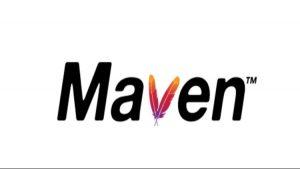Understanding Hazelcast Caching Patterns: Benefits and Use Cases
In today’s world, businesses generate and process vast amounts of data daily. As a result, data management has become a crucial aspect of the modern-day tech industry. One of the most popular ways of managing data is by using caching patterns. Hazelcast is one such in-memory data grid that supports multiple caching patterns. In this article, we will discuss different types of Hazelcast caching patterns, their benefits, and use cases.
Types of Hazelcast Caching Patterns
- Write-Through Caching Pattern: This caching pattern is used when the application needs to write data to the cache and the underlying database simultaneously. The primary benefit of this pattern is that it ensures data consistency between the cache and the database, preventing data loss or corruption. Use cases for write-through caching include financial applications and e-commerce applications that need to ensure data integrity.
- Write-Behind Caching Pattern: In this pattern, data is written to the cache first, and then asynchronously written to the database. The primary benefit of this pattern is that it improves write performance by reducing the number of database writes. Use cases for write-behind caching include applications with high write throughput, such as social media and gaming applications.
- Read-Through Caching Pattern: This pattern is used when the application needs to read data from the cache first, and if it’s not available, then from the underlying database. The primary benefit of this pattern is that it improves read performance by reducing the number of database reads. Use cases for read-through caching include applications that frequently read data from the database, such as reporting and analytics applications.
- Read-Behind Caching Pattern: In this pattern, data is read from the cache first, and then asynchronously loaded into the cache from the database. The primary benefit of this pattern is that it improves read performance by reducing the latency caused by database reads. Use cases for read-behind caching include applications that frequently read data from the database, such as reporting and analytics applications.
Benefits of Hazelcast Caching Patterns
- Improved Performance: Caching patterns improve application performance by reducing the number of database reads and writes, which can be time-consuming operations.
- Scalability: Hazelcast’s in-memory data grid architecture allows for horizontal scaling, enabling applications to handle an increasing volume of data and requests.
- Data Consistency: Write-through caching patterns ensure that data in the cache and the database remain consistent, preventing data loss or corruption.
- Reduced Latency: Read-behind caching patterns reduce latency by loading data into the cache asynchronously, reducing the time it takes to retrieve data from the database.
Use Cases for Hazelcast Caching Patterns
- Financial Applications: Write-through caching patterns are suitable for financial applications that require data consistency and integrity.
- Gaming Applications: Write-behind caching patterns are suitable for gaming applications that have high write throughput.
- Reporting and Analytics Applications: Read-through and read-behind caching patterns are suitable for applications that frequently read data from the database, such as reporting and analytics applications.
Conclusion
Hazelcast provides a wide range of caching patterns that can be used to improve application performance, scalability, and data consistency. Understanding the benefits and use cases for each pattern is essential in choosing the right caching pattern for your application. Write-through caching is suitable for applications that require data consistency and integrity, while write-behind caching is suitable for applications that have high write throughput. Read-through and read-behind caching are suitable for applications that frequently read data from the database. By choosing the right caching pattern, developers can improve their application’s performance and scalability.

